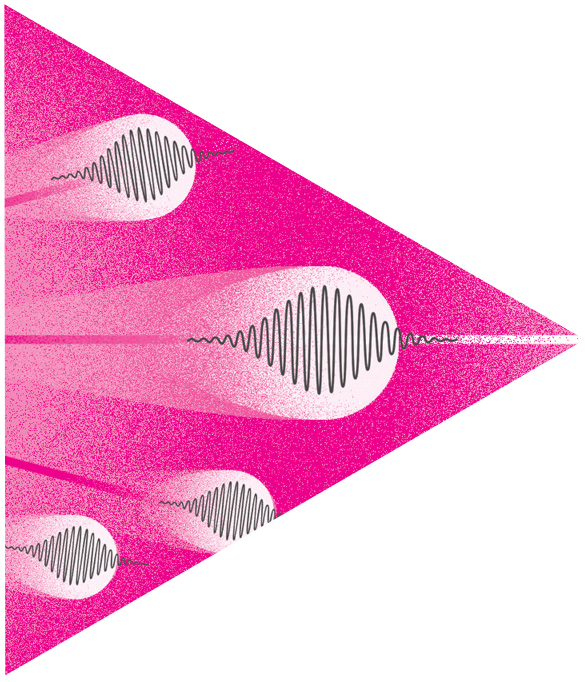Decipher
the
Quantum
Realm
Atoms are the building blocks of matter, but what are the building blocks of atoms? For more than a century we have known that each atom is composed of electrons surrounding a heavy nucleus, bound together by the electromagnetic force. The nucleus is composed of protons and neutrons, which are themselves composed of quarks, bound together by the strong force. The building blocks of atoms are particles, and the forces that bind the building blocks are also described by particles. All known subatomic phenomena can be described by particles and their interactions, an amazing new concept in modern science.
When we look deeper, we see that there is a rich landscape of quantum effects that rule the subatomic realm. The electron appears indivisible, yet its properties are affected by a quantum dance among all subatomic particles. The heaviest known subatomic particle is the top quark, which is surprisingly as massive as a gold atom. While the massless photons and gluons mediate the electromagnetic and strong force respectively, the mediators of the weak force, the W and Z bosons, are massive, blurring the distinction between “force” and “matter”. The Higgs boson, the particle associated with the Higgs field that permeates the universe, gives mass to other particles. The Standard Model provides a unified, elegant picture of the subatomic realm that has withstood the most rigorous tests at LHC and KEK. Beautiful as this picture is, it does not yet account for the masses of the mysterious and mutable neutrinos, which oscillate into one another as they travel through the universe.
Is the Standard Model the ultimate description of the quantum realm? Certainly not, which motivates the two science drivers under this theme for the next decade:

Elucidate the Mysteries of Neutrinos
Neutrinos come in three types, or flavors, which undergo quantum oscillations. While the Standard Model can be augmented to accommodate neutrino mass and oscillations, we do not know in which specific way to extend the model. Moreover, different extensions make vastly different predictions about the birth of the universe. We must further investigate the mysteries of neutrinos in order to explore the deep connections between their physics and the Standard Model.

Reveal the Secrets of the Higgs Boson
The discovery of the Higgs boson in 2012 was a major victory for the Standard Model. Subsequent investigations have revealed that the metastable vacuum in the Standard Model puts the universe on a knife-edge of cosmic collapse. Determining the ultimate fate of the universe and looking for physics beyond the Standard Model motivates further scrutiny of the Higgs sector.
